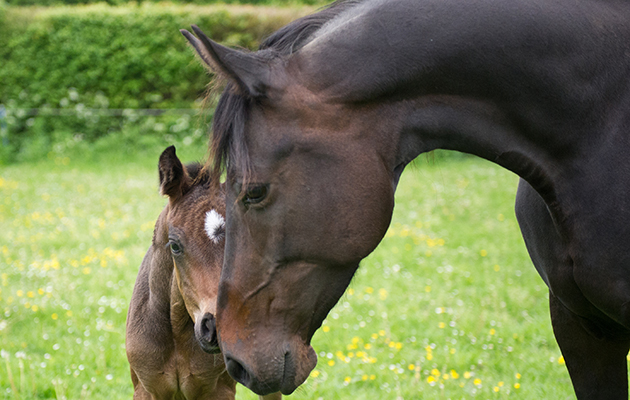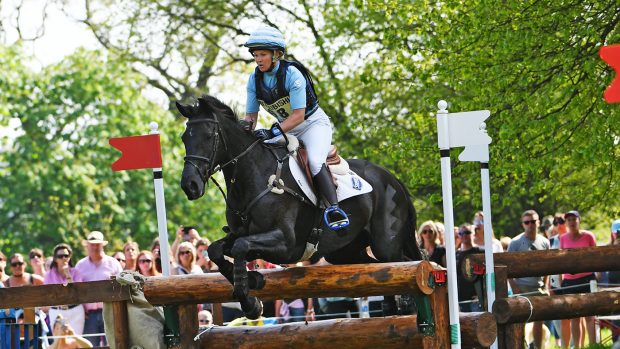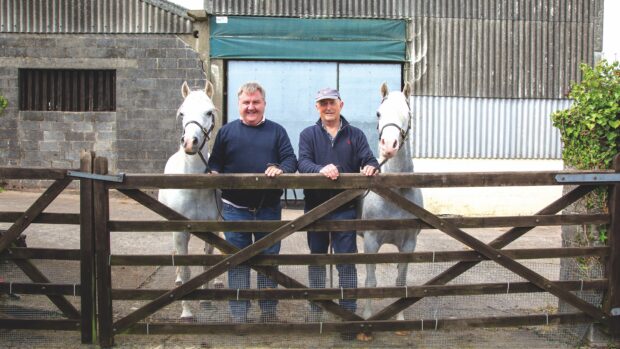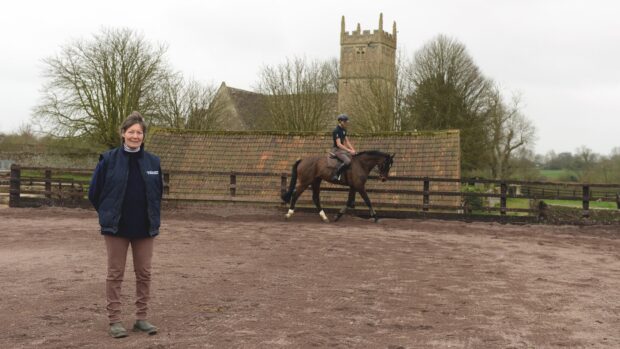If you have ever dreamed of breeding a foal, you’ve probably wondered what makes a good broodmare? And if you own a mare, you have probably considered the possibility of breeding from her. But the reality is that indiscriminate breeding is a problem in the UK, and while breeding from your beloved mare may seem like a lovely idea, it is important to be objective about whether she would truly make a good broodmare.
Aspiring breeders put a great deal of time and thought into their choice of stallion, quite rightly. But the same amount of consideration should be given to the mare as well, if not more – after all, she is the one who will be carrying precious cargo for 11 months, giving birth and nurturing the foal. And just because she is physically able to carry a foal, does not mean she should.
When it comes to assessing a mare to see if she has what it takes to be a good broodmare, the first thing to do is to honestly ask yourself what you want to breed, and your reasons for doing so. The cost of breeding a foal is substantial, the process can be complex and there is no guarantee you will achieve the desired result.
The next step is to take a long, honest look at the mare in front of you. Decide what you like about her, and what you don’t like – be as critical as possible. And remember that most people unwittingly don rose-tinted glasses when looking at a much-loved horse, so ask a professional to assess her too. Build up an objective picture of her strengths and weaknesses, and consider what you would be happy for a foal to inherit.
So what makes a good broodmare?
Three of the most important aspects to consider when assessing whether a horse would make a good broodmare are conformation, temperament and pedigree.
1. Look closely at the mare’s conformation – she should be balanced from back to front, with structural correctness and everything in proportion, as well as good feet, bone and girth. Consider her soundness record – you don’t want her to pass on inherent weaknesses to a foal. It is also very important to have a vet assess her perineal and reproductive conformation. Look carefully at her movement too, but don’t simply focus on how big or spectacular her paces are; instead assess their natural rhythm and correctness first of all, and look at how the mare uses her body.
2. Consider her temperament, trainability and rideability, and what you want her offspring to inherit. This is why it is crucial to know what it is you want to breed – if your aim is for the foal to grow up to be a safe all-rounder, or amateur’s competition horse, you need them to have high levels of rideability and a sane, sensible character. If, on the other hand, you are aiming to produce a top sport horse, you will usually require a ‘hotter’ temperament, but with a great deal of trainability and willingness to learn. Do not rely on the stallion to bring the temperament you want in a horse – at the very least, a good broodmare would be gentle, easy to handle, willing and sane.
3. Find out as much as you can about the mare’s pedigree. As well as helping you decide which stallion would best complement her, this will also give you a great indication of whether she will produce the sort of foal you are hoping to breed. Do your research into your mare’s damline; look at any other foals her dam or second dam have produced to gain an understanding of which traits are typically passed on and what has worked well before. Look as far back into a mareline’s history as possible, keeping an eye out for graded mares who may have produced successful horses. Credentials like this increase the chances that her offspring will also possess good potential for success.
Other things to consider in potential broodmares
1. The age of the mare. While there is no definitive age at which a mare should no longer be bred, fertility tends to start declining from around the age of 13, and this becomes of greater relevance if the mare is a maiden (has not previously had a foal).
2. Previous offspring. If the mare has had foals in the past, make sure you find out as much as you can about them as this will give a great indication of what your mare could produce in the future, as well as how suited the mare is to the breeding process itself.
3. The mare’s routine and schedule. If she is still competing, or for whatever other reason is less suited to carrying a foal, you may wish to consider embryo transfer, whereby an embryo is flushed from her and inserted into a recipient are to be carried to term.
You may also be interested in…

12 stallions standing in Britain that breeders need on their radar

‘I’m in love with this colt – his name is Dimaggio’: Alice Oppenheimer on how her family ‘fell’ into breeding

Breeding from older mares: is it a good idea and what are the best methods?

Subscribe to Horse & Hound magazine today – and enjoy unlimited website access all year round
Horse & Hound magazine, out every Thursday, is packed with all the latest news and reports, as well as interviews, specials, nostalgia, vet and training advice. Find how you can enjoy the magazine delivered to your door every week, plus options to upgrade your subscription to access our online service that brings you breaking news and reports as well as other benefits.




